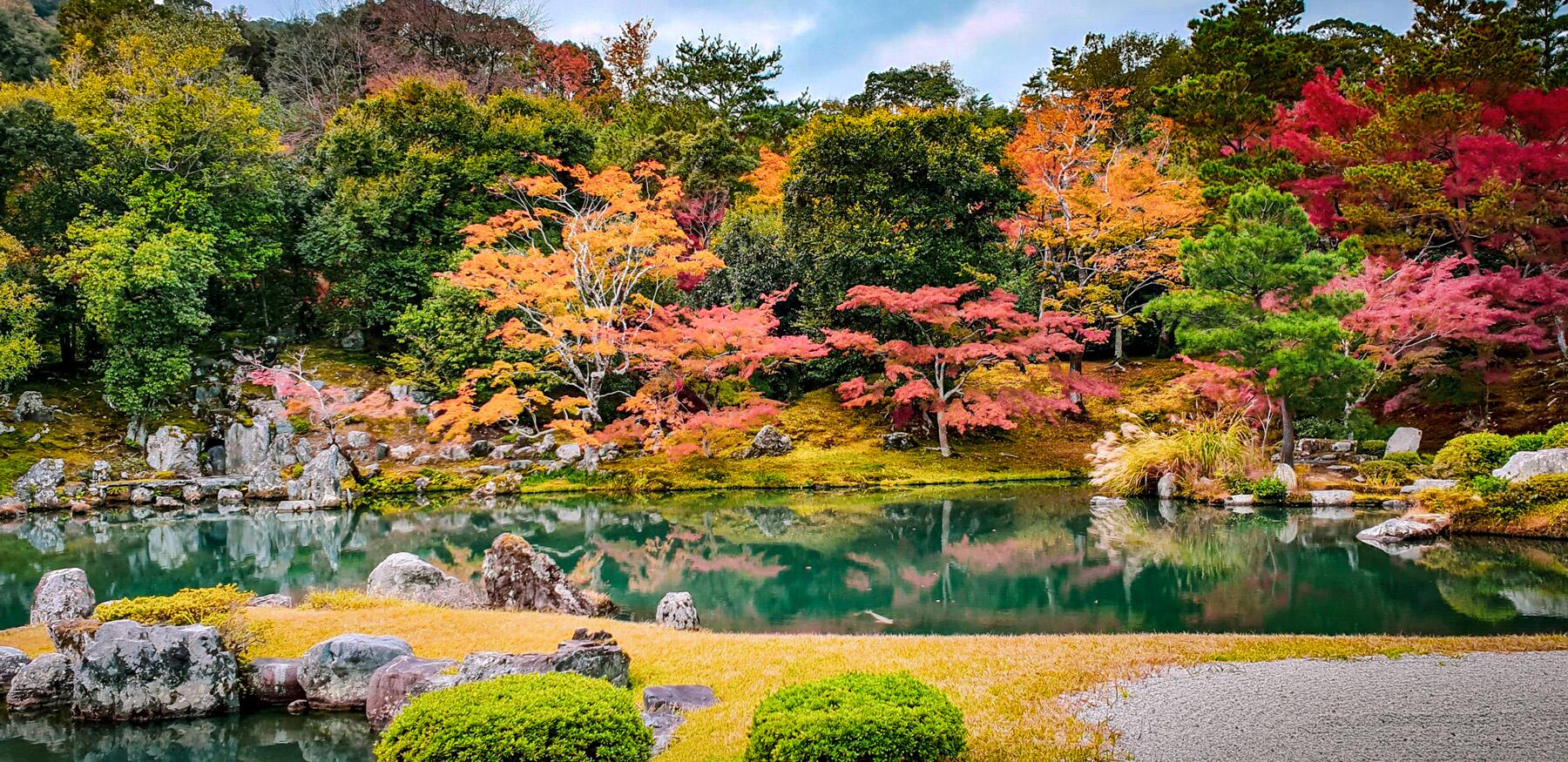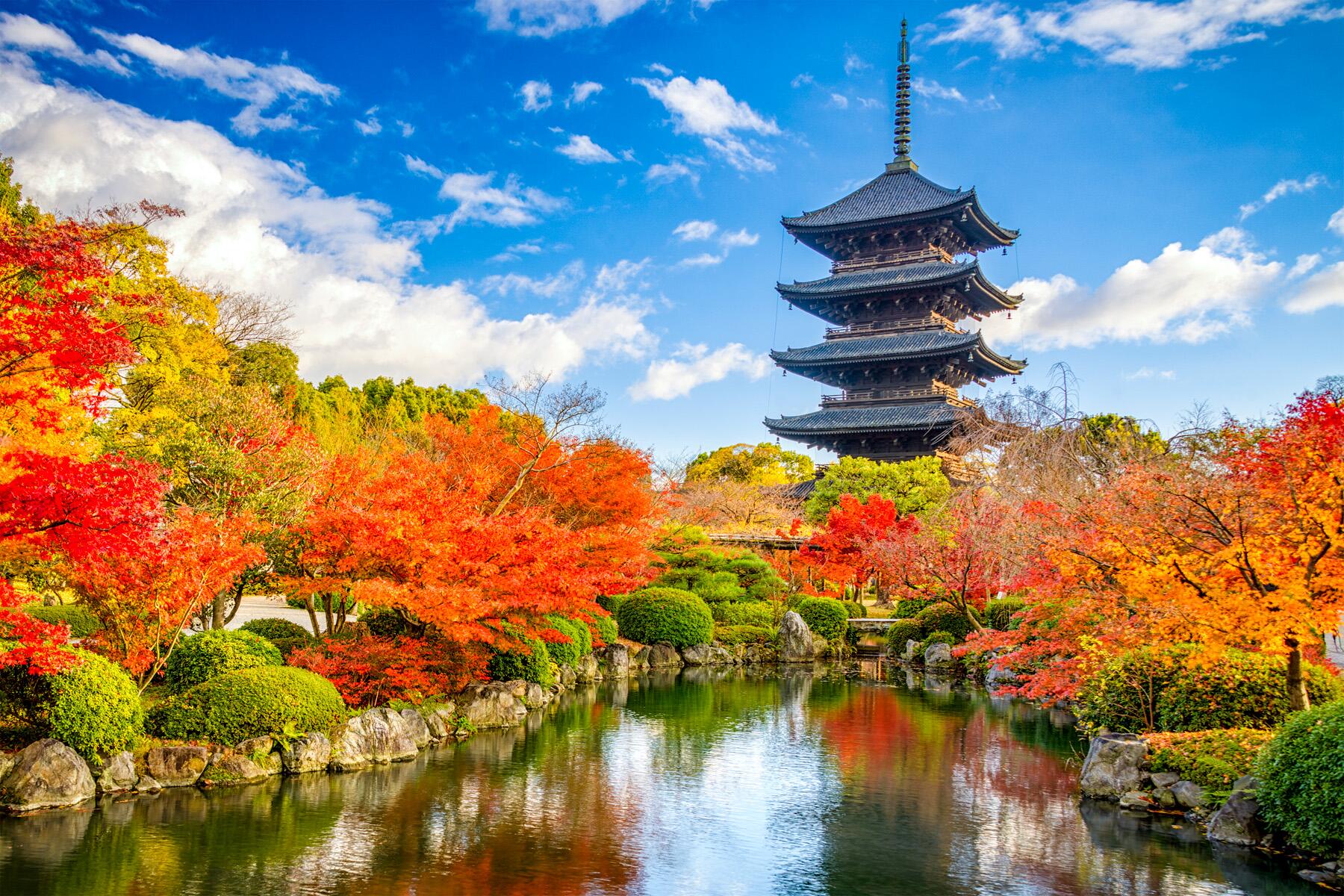In late autumn, Japan’s green spaces transform into canopies of crimson and amber, making them a prime location for seasonal leaf peeping.
Many travelers visit Japan in the spring for cherry blossom season, but did you know that fall leaf viewing is as traditionally cherished by the Japanese? Friends gather at temples, castles, and parks between early November and December to admire the fiery foliage and enjoy autumnal snacks and festivities.
Since Japan’s Heian period (794 to 1185), leaf peeping has been a beloved tradition all over the country. Different regions peak at varying times, so “leaf hunters” can study the annual forecast and follow the reddening leaves for weeks from north to south. Here are tips on planning a leaf-peeping trip to Japan this fall.
The History of Japanese Leaf Peeping
Japan’s custom of admiring autumn foliage dates back over a thousand years. Eighth-century records reveal that the Imperial Court traveled to scenic spots to engage in momijigari or maple leaf hunting, while classical poets wrote odes to the beauty of these landscapes.
The appreciation of falling leaves is also tied to Buddhist ideas of impermanence. Leaf peeping is a way to find joy in the present moment while recognizing that all things are transitory. Nowadays, friends and families throughout Japan gather to observe the changing colors of maple, oak, ginkgo, and zelkova trees.

How to See Japan’s Fall Leaves
Every year at the start of September, Japan Meteorological Corporation (JMC) releases an Autumn Foliage Forecast that predicts the best times to go leaf peeping in various cities. The brilliant hues begin up north in Hokkaido and generally travel down the islands until they light up the southern tip of Kagoshima.
Recommended Fodor’s Video
Because of climate change, Japan’s leaves turn yellow-orange-red later in the year than in the past. In 2023, JMC says Sapporo’s foliage will peak in early November, while Tokyo, Kyoto, and Osaka have their moment of glory between late November and early December. These viewing windows last a few weeks, and if you arrive on the early side, you’ll see a captivating mix of verdant and warm shades.

Where to See Autumn Foliage in Japan
Although you can go “leaf hunting” all over Japan, several areas are particularly famous for koyo or fall foliage. Kyoto’s Arashiyama bamboo forest and Tofuku-ji Zen temple are popular during the day, while visitors flock to Kiyomizu-dera temple at night for an illuminated viewing. Photographers adore Kawaguchiko’s Momiji Tunnel, a maple-lined road that forms a red frame around Mount Fuji. The Japanese Alps (Kamikochi, Nagano, and Takayama) are famous for their hiking trails through vivid foliage. In Hakone and Nikko, leaf peepers can enjoy onsen (natural hot springs baths) while gazing at the spectacular colors.
To avoid crowds, consider traveling to quieter viewing sites outside the major destinations. For example, from Kyoto, you can ride the train an hour and a half north to Shiga and catch the evening koyo illuminations at the Hiyoshi Taisha shrine. Although Daisetsuzan National Park and Mount Asahi have some of the country’s most breathtaking scarlet landscapes, Hokkaido also tends to be overlooked as an autumn destination.

Bookings and Best Practices
Japan’s peak foliage period can be as busy and pricy for travel as the cherry blossom season. Book hotels well in advance with free cancelation so that you can adjust your plans based on the forecast. Tourists can use a one, two, or three-week unlimited Japan Rail Pass to follow the leaves as they morph into russet. If you want to leaf peep at popular spots like Hyogo’s Himeji Castle, reserve advance tickets if they are available or show up early on a weekday to avoid long lines.
When you’re out on a “leaf hunt,” wear non-slip shoes and bring a jacket since temperatures can fall sharply. Don’t forget your camera and a blanket to put on the ground. Look for food stalls selling seasonal foods such as momiji manju, a red bean cake from Hiroshima shaped like a maple leaf. Finally, remember that this is an occasion for quiet reflection, so keep your voice low and be mindful of your fellow leaf peepers, especially when you are snapping selfies.



